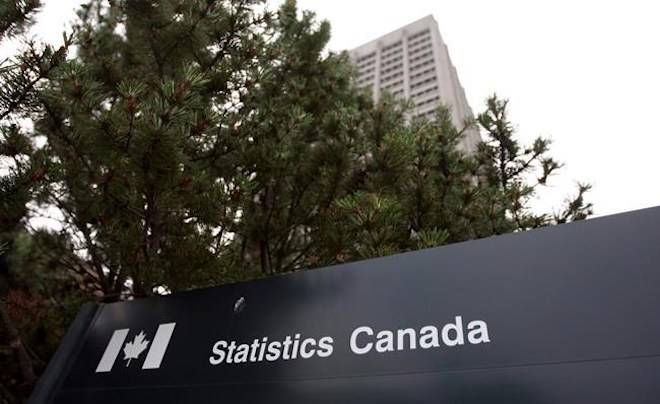The country’s annual inflation rate picked up its pace last month to hit 2.4 per cent in an advance mostly fuelled by higher gasoline prices, compared to a year ago, Statistics Canada said Friday.
The federal agency’s October inflation number marked an increase from 2.2 per cent in September and pushed the reading a little farther away from the Bank of Canada’s ideal, two per cent target.
Economists had expected October inflation to be 2.2 per cent, according to a poll by Thomson Reuters Eikon.
Year-over-year prices at the pump were 12 per cent higher in October, air transportation prices were up 9.4 per cent and mortgage interest costs climbed seven per cent, the report said.
The downward pressure month was led by prices declines of 7.2 per cent for video equipment, four per cent for telephone services and 3.9 per cent for traveller accommodation, compared to a year earlier.
Prices were higher last month in all provinces compared to October 2017, but Alberta was the only one to show a slower pace of inflation. A year earlier Alberta’s inflation rate was three per cent, while last month the pace was 2.8 per cent.
Read more: Annual pace of inflation slows to 2.2 per cent in September: Statistics Canada
In Ontario, Statistics Canada said energy prices slid 2.4 per cent on a month-to-month basis after the provincial government got rid of its carbon cap and trade program, which had been introduced last January.
The average of the agency’s three core inflation readings, which omit more-volatile items like gas prices, edged slightly higher to two per cent last month to hit the Bank of Canada’s bull’s-eye. The average core, or underlying, measure was 1.93 per cent in September, 2.03 per cent in August and 1.97 per cent in July.
The central bank pays close attention to core inflation ahead of its interest-rate decisions — and it can raise its trend-setting rate as a way to keep inflation from rising too high. It aims to keep inflation within a range of one to three per cent, with the two per cent mid-point as its primary target.
Bank of Canada governor Stephen Poloz’s next interest-rate announcement is scheduled for Dec. 5.
In a separate report Friday, Statistics Canada said retail sales for September moved up 0.2 per cent compared with August. Month-to-month retail trade was essentially unchanged in August and saw an increase of 0.2 per cent in July.
The September increase brought retail trade to $50.9 billion for the month.
The main contributor behind the increase were higher sales, of 0.9 per cent, at food and beverage stores. Supermarkets saw sales rise 1.7 per cent, which more than made up for a 1.7 per cent decline in beer, wine and liquor stores.
Sales also rose at general merchandise stores by 1.2 per cent, while motor vehicle and parts dealers saw an increase of 0.5 per cent.
Read more: B.C. rent increases capped to inflation, 2.5% for 2019
Andy Blatchford, The Canadian Press



